Building an online store used to be something only tech-savvy entrepreneurs could pull off. Not anymore. These days, anyone with a decent internet connection and a few hours can set up shop online and start selling to customers worldwide.
Here’s what changed: the tools got simpler, the costs dropped, and the barriers practically disappeared. Sure, there are moving parts, but once you know the basics, it’s actually pretty straightforward.
Whether you’re running a local shop or have a product idea that’s been sitting in your head for months, figuring out how to build an online store is probably the smartest business move you’ll make this year. Why? Because your customers are already shopping online – they’re just buying from someone else.
Building your own online store doesn’t require a computer science degree or a massive budget. In this guide, I’m going to show you exactly how to start an online store without all the fluff and confusing jargon.
We’ll cover five solid reasons why every business needs an online presence, plus the real steps that actually matter when you online store create your own digital storefront.
Ready to transform your business idea into a 24/7 money-making machine? Let’s dive in.
Importance of Building an online store website:
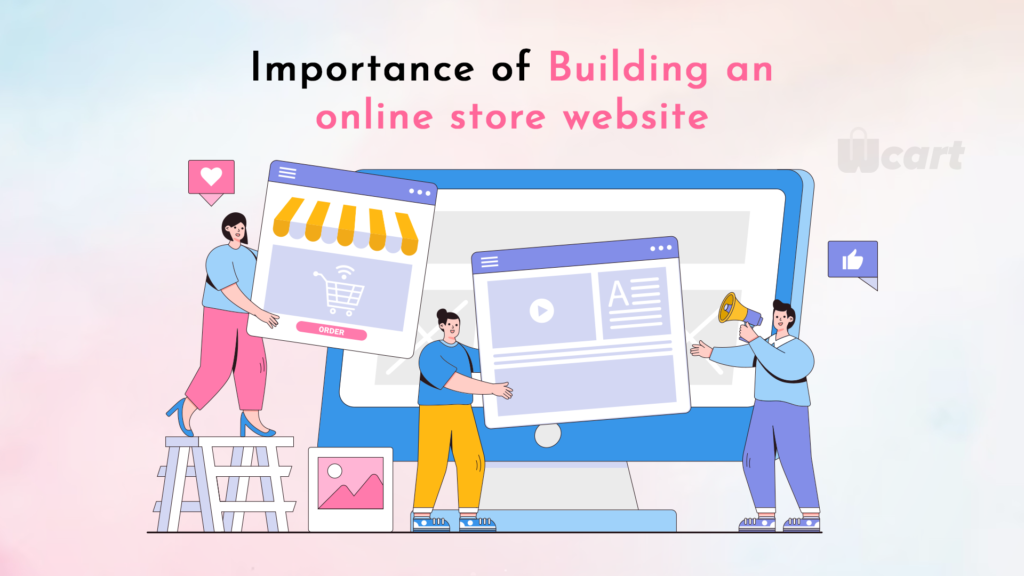
- First and foremost, let’s delve into the profound impact that the COVID-19 pandemic has had on businesses across the globe. The stringent safety regulations compelled numerous conventional brick-and-mortar establishments to shutter their doors, rendering them incapable of connecting with their clientele. Nevertheless, enterprises equipped with an online store website found themselves well-positioned to continue peddling their products and services, ensuring their survival amidst these arduous circumstances.
- Secondly, the advent of online store websites has opened up a vast expanse of possibilities, allowing businesses to cast their nets wider and ensnare a broader audience compared to the confines of a physical store. As the e-commerce phenomenon continues its ascent, an increasing number of consumers are embracing online shopping as their preferred avenue for acquiring goods. By embracing the concept of an online store website, businesses can tap into this flourishing market, enticing customers from every nook and cranny of the globe.
- Thirdly, the beauty of an online store website lies in its unceasing operation, unbounded by the limitations of physical presence. This perpetual availability grants customers the liberty to procure products or services at their convenience, substantially augmenting the likelihood of a successful transaction. Moreover, it liberates valuable time for business owners, enabling them to channel their energies into other pivotal facets of their operations.
In essence, the indispensability of an online store website in the contemporary digital era cannot be overstated. Its efficacy lies in its ability to extend reach, transcend temporal constraints, and foster competitiveness in an ever-shifting commercial landscape.
Planning and Preparation
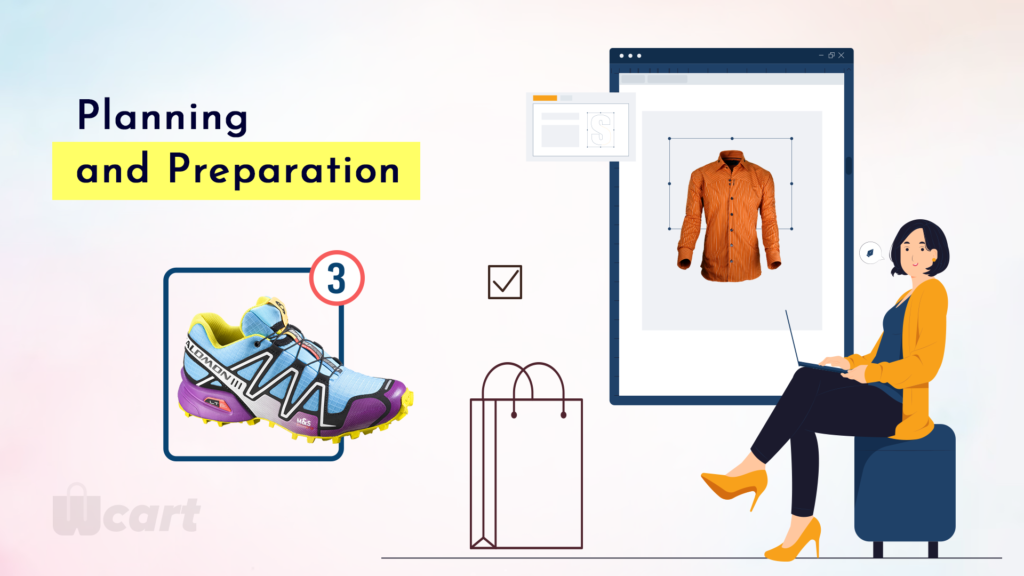
Before going into how to build an Online store website, I’ll say a few about Planning and Preparation
A. Identifying your target audience and niche
- Reaching a Specific Demographic: Imagine your desire to establish an online emporium specializing in organic skincare goods. To captivate your intended audience, it becomes imperative to discern their characteristics. Your target demographic may consist of health-conscious women aged 25-45 who display an inclination toward natural and eco-friendly products. By precisely identifying your target audience, you can tailor your website’s layout, communication, and product selection to resonate profoundly with this particular group.
- Embracing a Distinctive Niche: Another pivotal facet of crafting an online store website involves pinpointing your niche. Rather than offering generic home decor items, you may opt to concentrate on a specific niche such as the allure of Scandinavian-inspired home decor. Such a focused approach enables you to appeal to a devoted clientele who possess a fervor for this style and are potentially willing to invest extra for genuinely exceptional and authentic products.
- Personalizing the User Journey: By discerning your target audience and niche, you can further individualize the user experience on your website. This encompasses a myriad of elements, ranging from the language employed in your communication to the assortment of products you showcase. For instance, if your target audience demonstrates an affinity for natural and eco-friendly products, integrating details about the sustainability of your packaging or the ingredients utilized in your merchandise becomes paramount.
In essence, the pivotal factor in establishing a triumphant online store website lies in identifying your target audience and niche. By impeccably tailoring your website’s structure, communication, and product array to align with your specific target audience and niche, you can forge an unparalleled and memorable user experience that distinguishes you from competitors.
B. Choosing the right ecommerce platform
Choosing the perfect ecommerce platform holds immense significance in attaining triumph for your virtual enterprise. An ecommerce platform acts as a software application facilitating the creation and administration of your online store, encompassing crucial aspects such as product listings, inventory management, payment processing, and an array of additional features.
While cherry-picking the most suitable ecommerce platform, it is paramount to consider your business objectives, financial resources, and the specific functionalities you require. An assortment of pivotal factors warrants careful evaluation, including user-friendliness, customization options, scalability, security provisions, and the quality of customer support.
Furthermore, one should contemplate the nature of the products being sold, the scale of your business operations, and the specific demographics being targeted. Notably, various ecommerce platforms may boast specialization in certain industries or product categories, while others adopt a more all-encompassing approach.
Overall, the art of selecting an apt ecommerce platform necessitates meticulous research and thoughtful deliberation. By identifying a platform that aligns with your unique business requisites, you can build an online store capable of generating substantial revenue and elevating the stature of your brand.
C. Researching and selecting a domain name and hosting provider
When it comes to building an online store, a crucial aspect to consider is the selection of a domain name. A domain name acts as the web address through which people can access your website, for instance, “www.domain.com“. Opting for a domain name requires certain criteria to be met: it should be concise, easy to recall, and pertinent to your business or brand. Ensuring that your chosen domain name is not already in use by another business or protected by a trademark is of utmost importance and calls for thorough research.
Another essential factor in making your website accessible on the internet is the selection of a hosting provider. A hosting provider is a company that furnishes the necessary technology and services for your website to function effectively. Several factors warrant consideration when choosing a hosting provider, including reliability in terms of uptime, security features, customer support, and pricing. It is vital to engage in comprehensive research and comparisons among various hosting providers to identify the one that aligns best with your requirements and budget.
After finalizing your domain name and hosting provider, the next step involves acquiring the domain name and setting up your hosting account. Subsequently, you can embark on the process of building and publishing your website, allowing it to be unveiled to the world in all its glory.
D. Developing a site plan and creating a wireframe
In the realm of web development, two pivotal steps take the spotlight: devising a site plan and crafting a wireframe. Each plays a vital role in shaping the digital landscape. A site plan serves as a graphical portrayal, capturing the intricate layout and structure of a website. It orchestrates the hierarchy of pages and content, thus ensuring a seamless and intuitive user experience.
On the other hand, a wireframe takes center stage as a blueprint, delineating the website’s foundational framework and functionality. Its purpose lies in visually mapping out every page, and meticulously arranging elements like menus, text, images, and buttons. This meticulous arrangement empowers designers and developers to embark on a clear trajectory, paving the way for a website that caters to the users’ needs.
The journey of site plan development and wireframe creation thrives on collaboration, where designers, developers, and stakeholders converge. This collective effort is instrumental in garnering valuable feedback and implementing necessary revisions. Such an iterative approach ensures that the website aligns with the business objectives and delivers a gratifying user experience.
With a meticulously developed site plan and an intricately crafted wireframe, you pave the way for an exquisitely organized, visually captivating, and user-friendly website. This trifecta acts as a catalyst, propelling engagement and conversions to new heights.
Design and Development for Building an Online Store
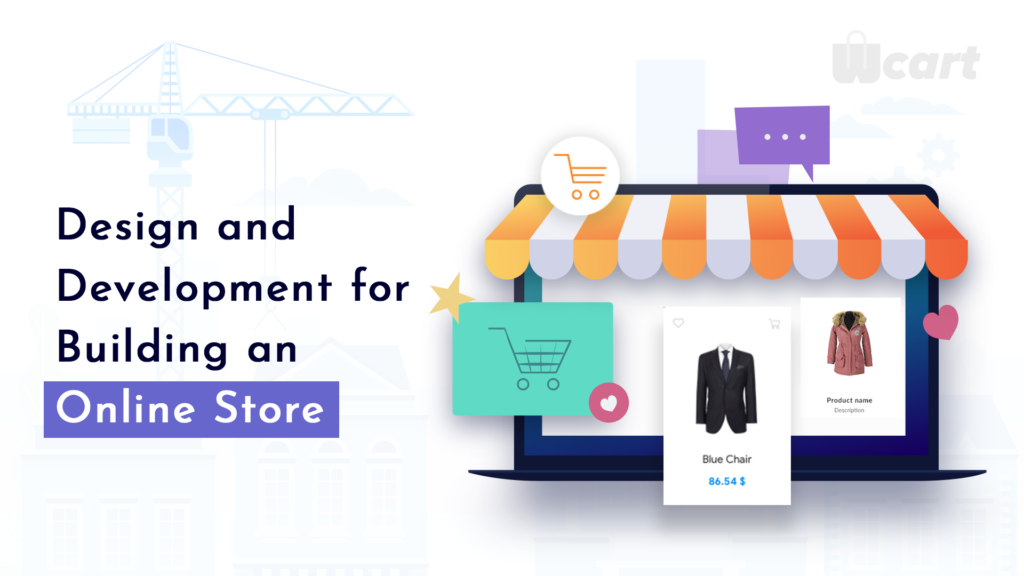
To build an online store business these are the steps need to carry on:
A. Choosing a theme or template

When creating a website on these platforms, you will be prompted to choose a theme or template for your site. This is the foundation of your website’s design, including the layout, color scheme, and typography.
As you browse through the available options, you can preview each theme or template in real time to see how it will look on your website. This allows you to experiment with different designs and find one that best suits your brand and business goals.
For example, on “Wcart”, you can select a theme and then use the built-in theme editor to customize the design further. You can change colors, fonts, and layouts to make it match your brand and make it unique.
Choosing the right theme or template is important because it sets the tone for your website and can affect the user experience. A well-designed theme can make your website more visually appealing, easier to navigate, and ultimately, more successful in achieving your business objectives.
In summary, choosing a theme or template is a crucial step in website creation, and the ability to preview and customize in real-time can help you find the perfect design for your brand.
B. Customizing your online store’s design
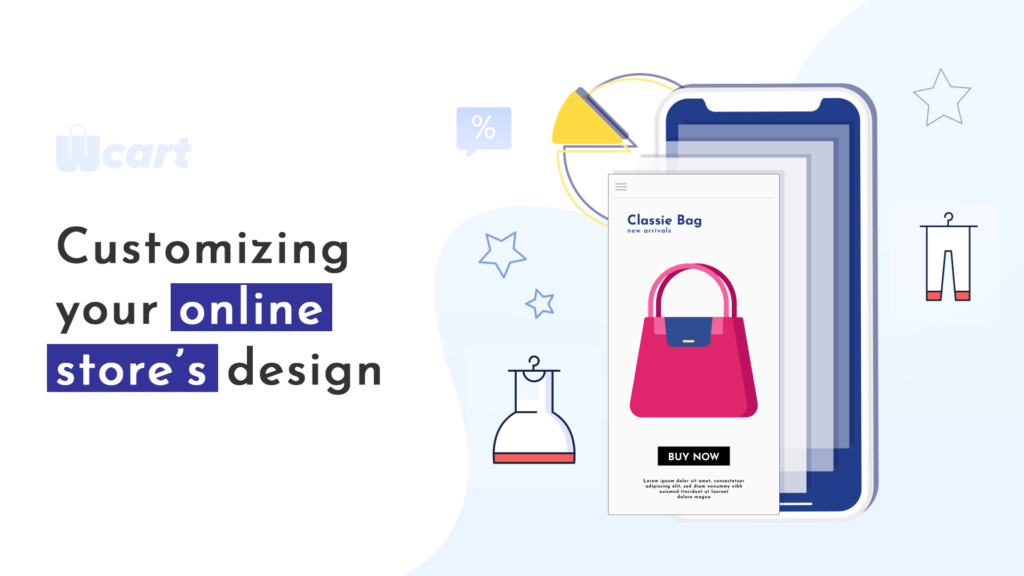
Customizing your online store’s design is an important step in creating a unique and visually appealing e-commerce website. This process involves selecting a theme or template that best fits your brand and business goals, and then customizing it further using various tools such as a theme editor or HTML/CSS code. Customization options may include changing colors, fonts, layouts, adding or removing sections, etc. The ultimate goal is to create a design that not only looks great but also provides a positive user experience and drives conversions.
C. Developing your site’s structure and functionality
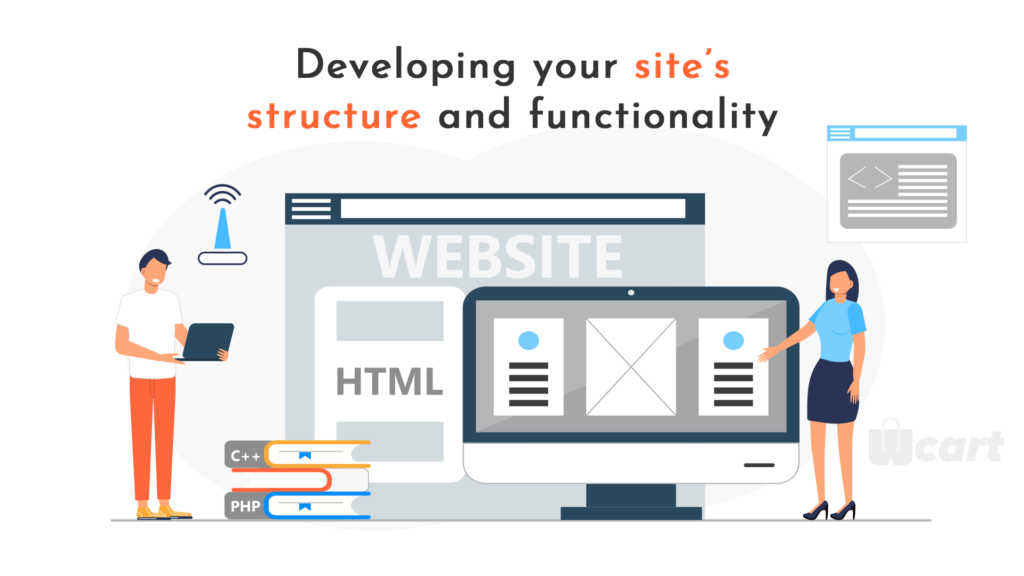
Developing your site’s structure and functionality is a crucial step in creating a successful website. This involves designing and organizing your website’s content and features to provide a positive user experience.
Examples of developing your site’s structure and functionality include creating a clear navigation menu that makes it easy for users to find what they are looking for, designing a user-friendly search function, optimizing the website’s loading speed, integrating social media sharing buttons, and ensuring that the website is mobile-responsive.
Other important considerations when developing your site’s structure and functionality include incorporating call-to-actions (CTAs) that encourage users to take specific actions, such as signing up for a newsletter or making a purchase, and ensuring that your website’s content is well-organized and easy to read.
To make sure that your website meets the needs of your target audience, it’s important to conduct user testing and gather feedback throughout the development process. This will help you identify areas that need improvement and make necessary changes to improve the overall user experience.
D. Creating product categories and listings
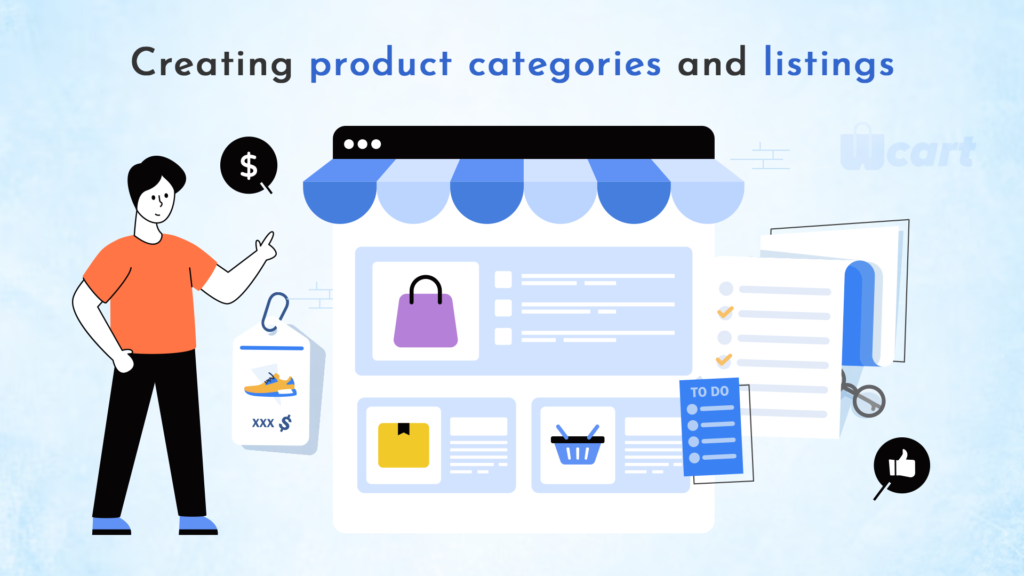
Creating product categories and listings can be found on e-commerce platforms like Wcart or Bigcommerce. After setting up your store, you can create product categories and listings that help shoppers easily find and browse your products. This involves adding product images, descriptions, prices, and other details, and organizing them into relevant categories for easy navigation.
Creating product categories and listings is an important step in organizing and displaying products on an e-commerce website. This involves creating categories to group similar products together and then creating product listings within those categories. This makes it easier for customers to find what they are looking for and can help increase sales by showcasing the products effectively.
Content Creation and Optimization.

This is post build an online store, you need to focus:
A. Creating high-quality product descriptions and images
Creating high-quality product descriptions and images can be found on the Wcarts platform. Each product listing includes detailed descriptions and multiple high-quality images that showcase the product from different angles. The descriptions highlight key features and benefits of the product, while the images provide a clear and accurate representation of the product. This helps customers make informed purchase decisions and can ultimately lead to increased sales.
B. Optimizing your online store for search engines
Optimizing your online store for search engines is crucial for improving your website’s visibility and driving more traffic to your website. Some key steps to take include conducting keyword research to identify popular search terms related to your products or services, optimizing your website’s meta titles and descriptions, using structured data markup to help search engines understand your website’s content better, and creating high-quality content that incorporates relevant keywords.
Other strategies for optimizing your online store for search engines include optimizing product images and descriptions, improving website speed and performance, creating a user-friendly website architecture, and building high-quality backlinks to your website from other reputable websites.
Finally, by taking these steps to optimize your online store for search engines, you can increase your website’s visibility in search results and attract more potential customers to your website. It’s important to regularly monitor and analyze your website’s search engine rankings and make necessary adjustments to ensure that your website continues to perform well in search results over time.
C. Developing a content strategy for your site
Developing a content strategy for your site involves creating a plan for the type of content you will produce, the topics you will cover, and the frequency of updates. This helps to ensure that your website provides value to your audience and supports your business goals.
In real-time, developing a content strategy may involve conducting market research to identify the needs and interests of your target audience, defining the tone and style of your content, and creating an editorial calendar to plan out content topics and deadlines.
You may also need to consider the format of your content, such as blog posts, videos, podcasts, or infographics, and the channels through which you will promote your content, such as social media, email marketing, or paid advertising.
Overall, a well-developed content strategy can help establish your brand as a thought leader in your industry, drive traffic to your website, and generate leads and sales. Regularly monitoring and analyzing the performance of your content can also help you refine your strategy and improve your results over time.
Payment and Shipping Options
This is about the ways you could collect money from your customers:
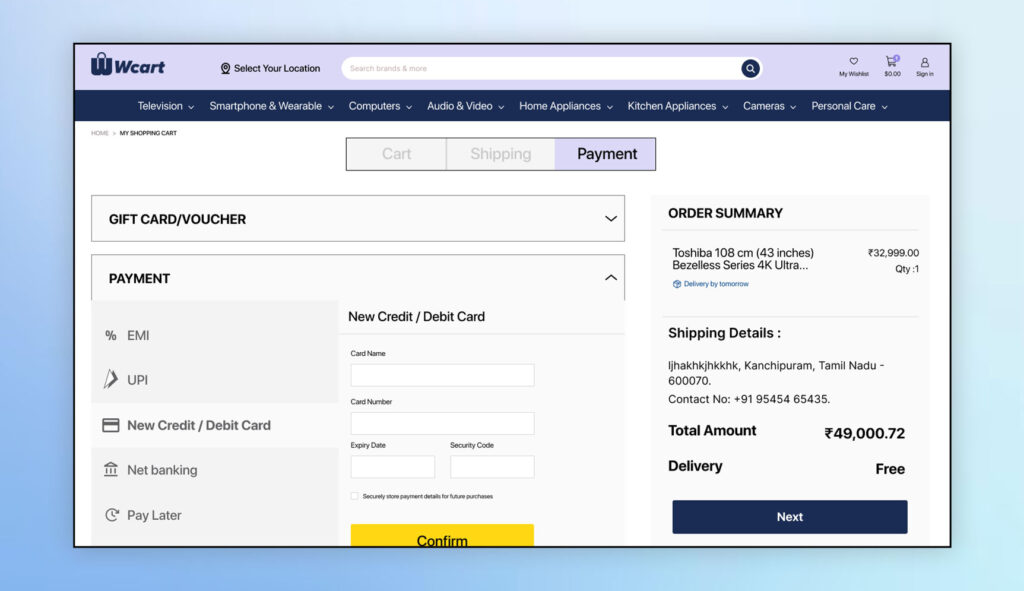
A. Setting up payment and shipping methods
To set up payment and shipping methods for your website, you need to first select a payment gateway that supports your region and business needs. You can then integrate it into your website and configure the payment settings. For shipping, you need to choose a shipping carrier that meets your requirements and integrate their services into your website. You should also configure the shipping rates based on weight, location, and other relevant factors. Testing the payment and shipping systems thoroughly before going live is also crucial to ensure a smooth customer experience.
B. Choosing a payment gateway
When choosing a payment gateway for your website, first consider your target audience and the payment options they prefer. Then, evaluate the security features of each payment gateway to protect your customers’ sensitive information. Therefore, compare the transaction fees and pricing structures of each gateway to ensure you’re getting the best value for your business. Finally, consider the integration process and customer support provided by the payment gateway to ensure a smooth and hassle-free payment experience for your customers.
C. Offering various shipping options to customers
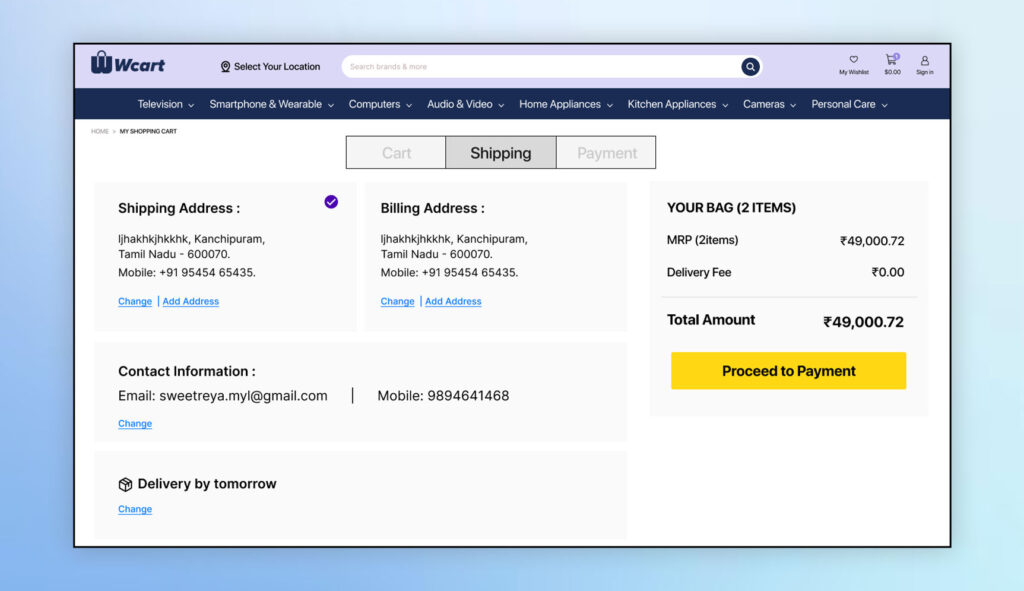
When running an online store, offering various shipping options to customers is crucial for providing a good customer experience. Customers appreciate having options and being able to choose the shipping method that best fits their needs. Some common shipping options include standard, expedited, and overnight shipping. Additionally, providing tracking information and estimated delivery dates can help increase customer satisfaction and reduce support inquiries. So, by offering multiple shipping options and providing clear information, you can help ensure your customers receive their orders in a timely and satisfactory manner.
Launching and Promoting Your Online Store.

It’s all about finding and placing the right acquisition methods relevant to the online store:
A. Testing your online store and making final adjustments
Testing your online store is a crucial step to ensure a smooth customer experience. Before launching your website, make sure to test all the features such as browsing, searching, adding items to cart, and checkout. Check for any broken links or errors, and ensure that the website is mobile-friendly. It’s important to test on different devices and browsers to ensure compatibility. Once you’ve identified any issues, make the necessary adjustments and test again until you’re satisfied with the results. Therefore thoroughly testing and making final adjustments, you’ll be able to provide a seamless shopping experience for your customers.
B. Launching your online store
- choose a platform for your online store – such as Wcart or WooCommerce. This platform will handle the technical aspects of your store, such as hosting and payment processing.
- select a domain name and set up your website. This involves choosing a template or theme for your store, creating product pages, and setting up a navigation menu.
- Decide on a payment gateway to process transactions, such as PayPal or Stripe.
- Once your store is set up, it’s time to start marketing it. You can use social media, email marketing, and search engine optimization (SEO) to drive traffic to your site and attract customers.
- Finally, need to fulfill orders and manage your inventory. This involves shipping products to customers, handling returns and exchanges, and keeping track of stock levels.
Overall with these steps, you’ll be well on your way to building a successful online store.
C. Promoting your online store through various channels
Promoting an online store is essential to reach out to potential customers and increase sales. There are various channels through which you can promote your online store, such as social media marketing, email marketing, search engine optimization, pay-per-click advertising, content marketing, and influencer marketing.
- Social media marketing involves creating and sharing content on social media platforms to engage with your audience and drive traffic to your store. Email marketing involves sending promotional emails to your subscribers, informing them about new products, offers, and discounts.
- Search engine optimization involves optimizing your website content and structure to rank higher on search engines and increase organic traffic. Pay-per-click advertising involves running paid ads on search engines and social media platforms to drive targeted traffic to your store.
- Content marketing involves creating valuable content that educates and entertains your audience, building trust and loyalty. Influencer marketing involves partnering with social media influencers to promote your products and brand to their followers.
Finally, by using a combination of these channels, you can build a comprehensive online store promotion strategy that reaches a wider audience and drives more traffic and sales to your store.
Conclusion
Building your own online store doesn’t have to be complicated or expensive. With the right approach, you can go from idea to selling online in just a few days.
Your competitors are already online, and your customers are shopping there every day. The tools exist, the market’s ready, and now you know exactly how to build an online store that works.
Stop overthinking it. Pick a platform, follow the steps we covered, and launch. You can always improve things later, but you can’t make sales from a store that doesn’t exist.
Ready to get started? Take the first step today and watch your business grow beyond what you thought possible.
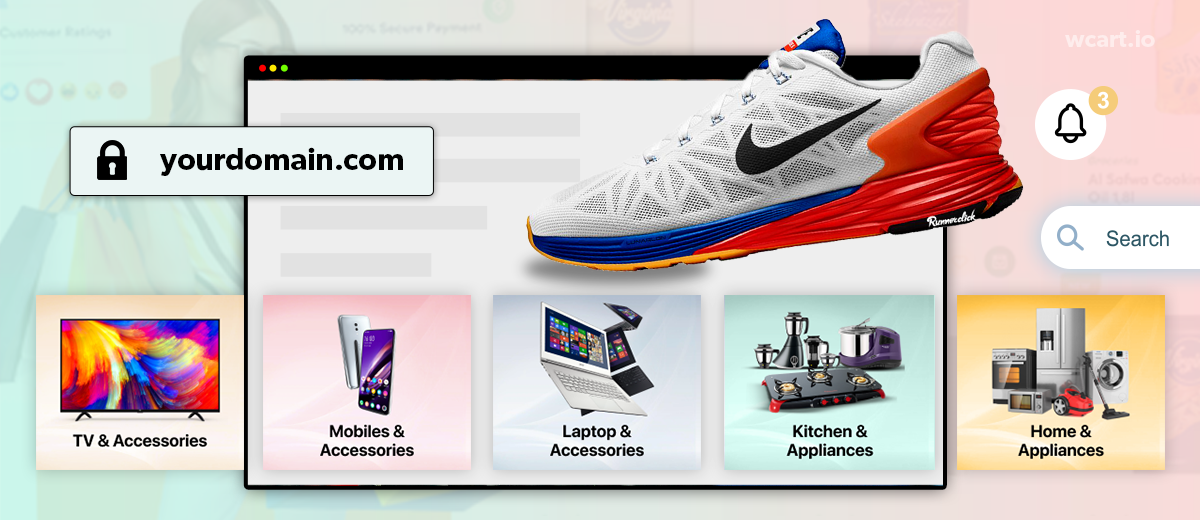



Leave a Reply